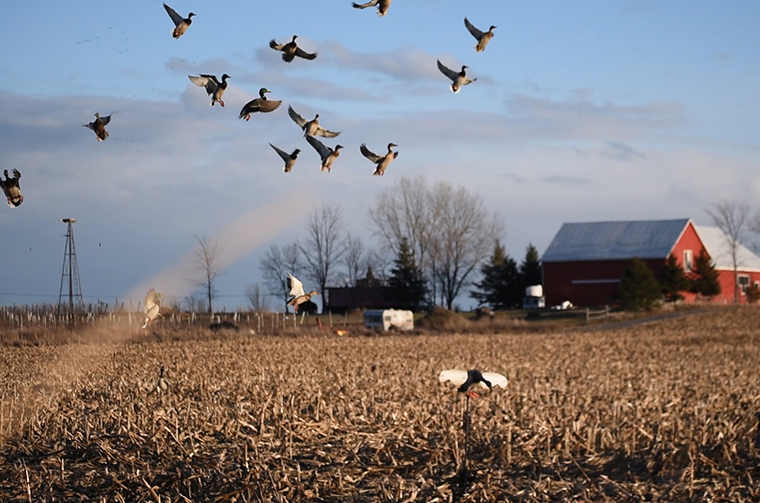
I’ve been on several exciting, successful hunts, but nothing has prepared me for the evening tornado of mallards that are swirling above the blind, all eager to land amongst our decoys.
The sound of their flapping wings is deafening as they make one pass after another, slowly backpedalling their way to the ground.
Capital calling
Our guide, Ryan Reynolds, has been hunting waterfowl since the age of 12 and has been a professional waterfowl guide for 13 years, hunting and guiding across Canada. Reynolds holds 14 national waterfowl-calling titles, and is co-owner of Capital Waterfowling, where he designs and creates the calls he uses in the field.
His furry companion, Iceman, is a legendary black Lab from Indiana. With over 13,000 birds retrieved, Iceman is one of the best working dogs out there.
I first met Reynolds and five other hunters around 10:00 a.m. at a cozy rental property in the town of Bath, in mid-December. The gorgeous six-bedroom cottage known as “Blue Haven” is located right on the water, just before Lake Ontario narrows into the St. Lawrence River. During hunting season, Reynolds has exclusive use of the cottage for hunting groups requiring accommodation.
We enjoyed a cup of coffee and got acquainted before Reynolds laid down the course of action. He had scouted a cut cornfield the evening before that held a large number of birds. The plan was to get into the field by early afternoon, set up our blind, and wait for the mallards to fly off Lake Ontario and into the field for an evening feed.
The hunt
The large cornfield is a kilometre or so uphill from the lake, and Reynolds has picked out a spot on the backside where we will set up. It takes us about 45 minutes to put together an A-frame blind, which we decorate with long grass and corn stalks until it’s perfectly camouflaged.
We pile into the blind, take our seats, and begin the pre-hunt ritual of uncasing our guns and filling our pockets with shells. Reynolds walks out in front of the blind followed by Iceman, and sets out dozens of full-body Canada goose decoys and two Mojo mechanical duck decoys.
In the first hour we see only a handful of birds flying off in the distance. Then, at almost 3 p.m. the first flocks of ducks come off the river and head in our direction. Reynolds starts calling them in, and after one big circle they commit and start cupping into our spread. “Get ‘em boys!” pipes Reynolds, when they come within range.
With that, we all spring into action, letting off a barrage of shots. A few birds fall, but we are clearly a bit rusty, as the majority safely fly off. We quickly find our groove and the flocks that follow do not have it so easy.
The glow of success
As the December sun sinks lower in the sky, it lights up the landscape in a beautiful orange hue, and the mallards come in by the dozen. At its peak, there are easily more than 500 mallards whirling above us, eager to land within the decoys. We know there are only three more ducks to our limit so I put down my shotgun and grab my camera to film the remarkable chaos above.
“That’s a limit guys,” Reynolds yells as the last few birds hit the ground. Iceman diligently gathers them up and gently returns them one by one to Reynolds’ hand. Still jacked up from the exhilarating hunt, we exchange high-fives and handshakes before getting to work breaking down the blind and picking up spent shells.
Reynolds brings the truck around, we load up our decoys and the A-frames, and head back to the cottage where Reynolds makes short work of cleaning the birds and packaging them for us. A couple of drake mallards with beautiful plumage are chosen to become mounts.
That evening opened my eyes to a level of duck hunting I’d never seen before. It was a hunt I will remember for years to come.

Getting there: Off the 401, take exit 579 Kaladar, Napanee
Contact: Call Ryan Reynolds directly at Capital Waterfowling Napanee at 613-453-8224 or email him here
Originally published in the Fall 2018 issue of Ontario OUT of DOORS magazine.


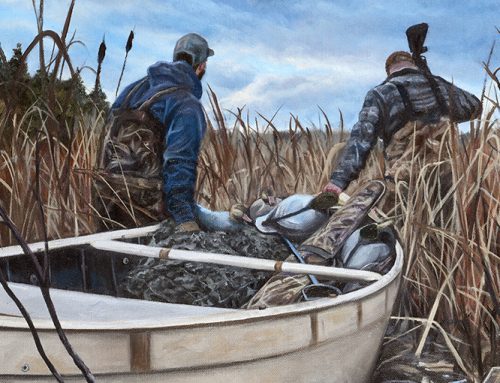
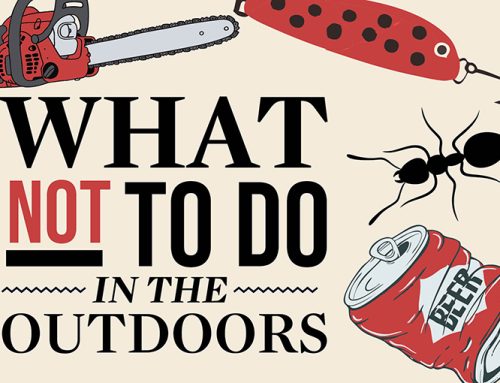
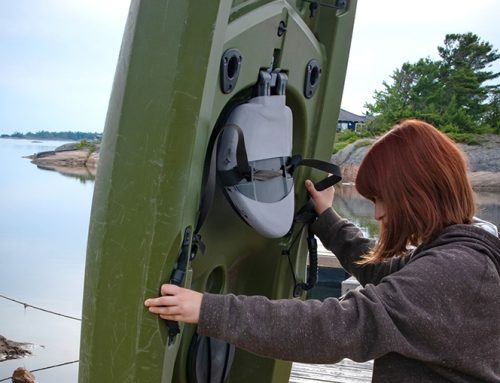
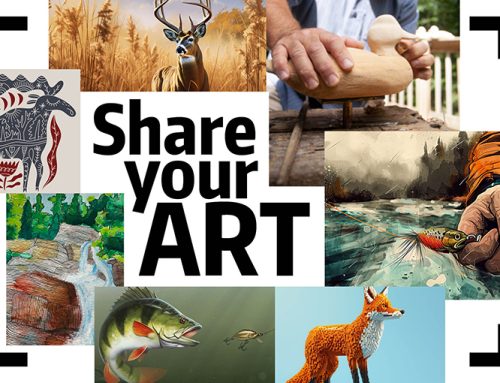
looking to hunt waterfowl and duck. can you please provide more info on how i would go about doing this?
Patrick,
Couple of resource options for you, that you can copy and paste into your browser:
The waterfowl category of oodmag.com: https://new.oodmag.com/waterfowl/
The waterfowl subthread on the oodmag.com Forum: oodmag.com/community/forumdisplay.php?33-Waterfowl
The 2022 Hunting Regulations Summary: https://www.ontario.ca/document/ontario-hunting-regulations-summary